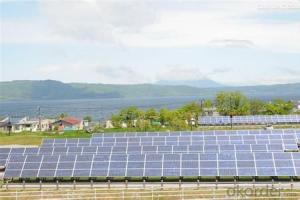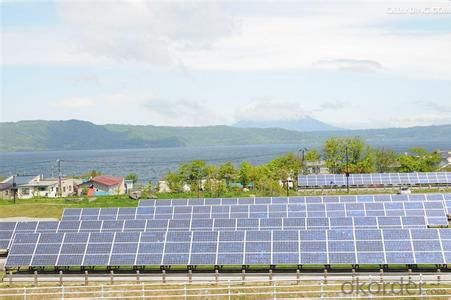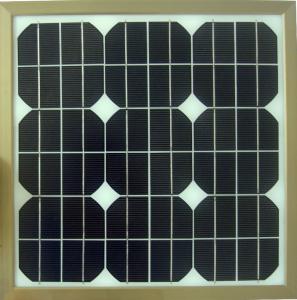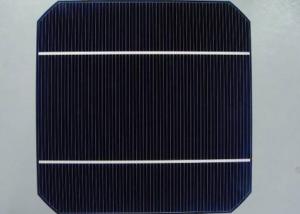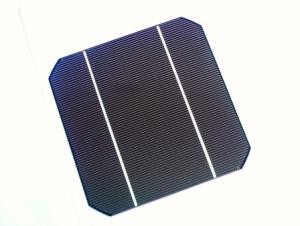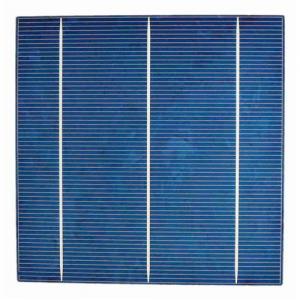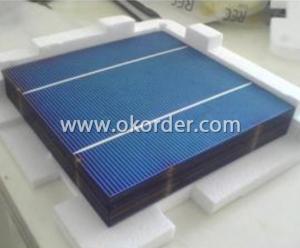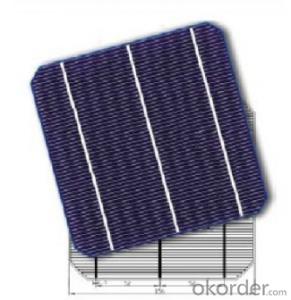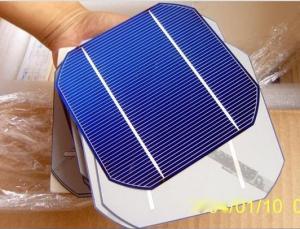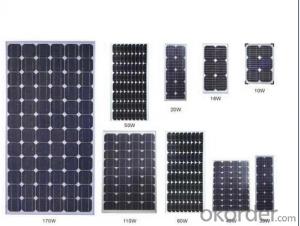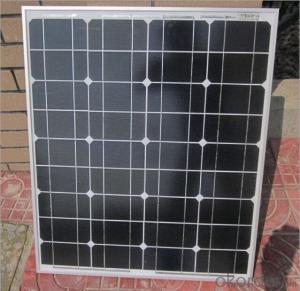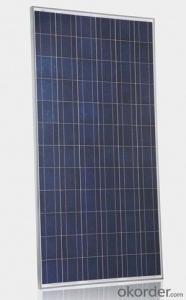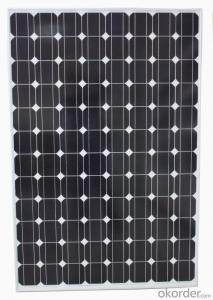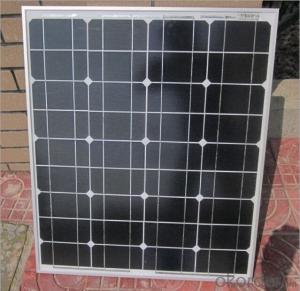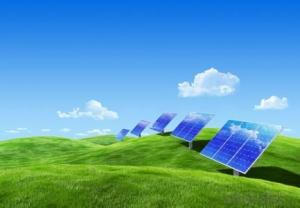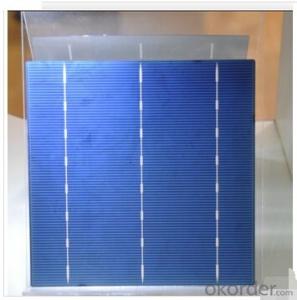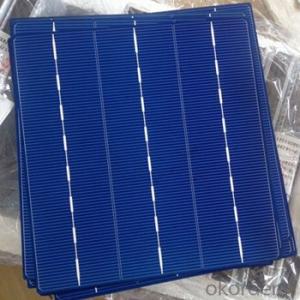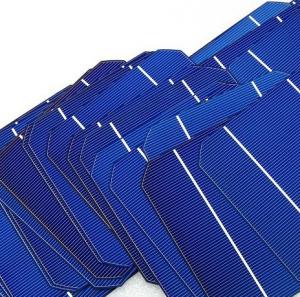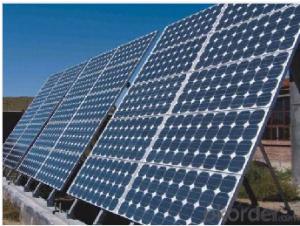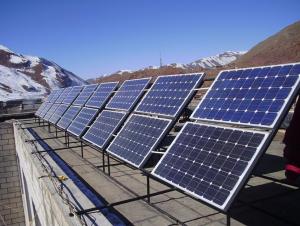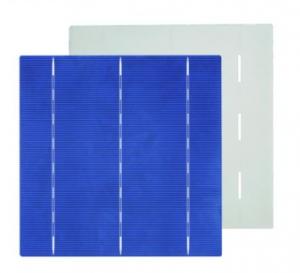Discount Monocrystalline Silicon Home Solar Cells 50w
- Loading Port:
- China Main Port
- Payment Terms:
- TT OR LC
- Min Order Qty:
- -
- Supply Capability:
- -
OKorder Service Pledge
Quality Product, Order Online Tracking, Timely Delivery
OKorder Financial Service
Credit Rating, Credit Services, Credit Purchasing
You Might Also Like
Quick Details
| Model Number: | |||||
| Material: | Size: | Number of Cells: | |||
| Max. Power: | Certificate: | Color: | |||
| Frame: |
Packaging & Delivery
| Packaging Detail: | packaging:carton and wooden pallets. weight:4.3kg 20GP:2065pcs 40HQ:4310pcs |
| Delivery Detail: | 15-20 days ,depend on your order quantity. |
Specifications
1.17% conversion efficiency.
2.Excellent quality with good price.
3.100% TEST before and after encapsulation.
4.MOQ:100pcs
Design features of solar panel:
Front | Tempered glass |
Encapsulation | EVA |
Back | TPT |
Frame | Aluminum |
Warranty | 5 years |
Life time | 25 years |
Certificate | CE, ISO, ROHS |
Electrical characteristics:
| Maximum Power[Pmax] | 50W ±5% |
| Maximum Power Voltage[Vmp] | 18V ±3% |
| Maximum Power Current[Imp] | 2.77A ±3% |
| Short-Circuit Current[Isc] | 3.05A ±3% |
| Open-Circuit Voltage[Voc] | 21.6V ±3% |
| Current Temperature coefficient | 0.08%/ ℃ |
| Voltage Temperature Coefficient | -0.32%/ ℃ |
| Power Temperature Coefficient | -0.38%/ ℃ |
| Maximum System Voltage | 1000V |
- Q: Can solar cells be used in powering electric boats?
- Yes, solar cells can be used to power electric boats. Solar panels can convert sunlight into electricity, which can then be used to charge the batteries of electric boats. This renewable energy source is clean, sustainable, and can help reduce carbon emissions from boating activities.
- Q: What is the role of anti-reflective coatings in solar cells?
- The role of anti-reflective coatings in solar cells is to minimize the reflection of sunlight off the surface of the solar cell, allowing more light to be absorbed and converted into electricity. This improves the overall efficiency and performance of the solar cell.
- Q: How can the solar power change our life by using solar cells material?
- 100 years ago, no human being could ever dare to imagine that we can use solar cells to generate solar power to better change our life. Today it is happening everyday!
- Q: Are solar cells impacted by shading?
- Yes, solar cells are significantly impacted by shading. Even a small amount of shading, such as from trees or buildings, can drastically reduce the efficiency and output of a solar cell. Shading causes certain parts of the cell to receive less sunlight, resulting in decreased energy production. Therefore, it is important to install solar panels in areas with maximum sunlight exposure to optimize their performance.
- Q: What is the cost of producing a solar cell?
- The cost of producing a solar cell can vary depending on various factors such as the type and size of the cell, manufacturing technology, materials used, and economies of scale. On average, the cost ranges from $0.15 to $0.40 per watt for the production of a standard crystalline silicon solar cell. However, with advancements in technology and increasing global demand, the cost has been steadily decreasing over the years.
- Q: How do solar cells perform in areas with high levels of chemical pollutants?
- Solar cells may not perform optimally in areas with high levels of chemical pollutants. The presence of pollutants in the air can reduce the amount of sunlight reaching the solar cells, thereby decreasing their efficiency and power output. Additionally, chemical pollutants may accumulate on the surface of the solar cells, leading to the formation of a layer that can block sunlight absorption. Regular cleaning and maintenance of the solar cells becomes crucial in such areas to mitigate the impact of chemical pollutants on their performance.
- Q: Can solar cells be used to power electric gates?
- Yes, solar cells can be used to power electric gates. Solar cells convert sunlight into electricity, which can be stored in batteries and used to power various devices, including electric gates. This allows for a sustainable and environmentally friendly solution to power electric gates without relying on traditional energy sources.
- Q: What is the average lifespan of a solar cell in space?
- The average lifespan of a solar cell in space can vary depending on several factors, such as the quality of the materials used, exposure to radiation, and maintenance. Generally, solar cells in space are designed to last anywhere from 10 to 25 years, but some have been known to continue functioning well beyond that timeframe.
- Q: Can solar cells be used for telecommunications infrastructure?
- Yes, solar cells can indeed be used for telecommunications infrastructure. Solar cells can generate electricity from sunlight, which can be used to power various telecommunications equipment such as cell towers, base stations, and repeaters. This renewable energy source helps reduce dependence on traditional power sources, increases energy efficiency, and can even enable telecommunication services in remote or off-grid areas where grid power is unavailable.
- Q: Can solar cells be used for powering agricultural equipment?
- Yes, solar cells can be used for powering agricultural equipment. Solar panels can convert sunlight into electricity, which can then be used to power various agricultural machinery such as irrigation systems, pumps, electric fences, and even tractors or vehicles. Using solar power for agricultural equipment can help reduce reliance on fossil fuels, lower operational costs, and promote sustainable farming practices.
Send your message to us
Discount Monocrystalline Silicon Home Solar Cells 50w
- Loading Port:
- China Main Port
- Payment Terms:
- TT OR LC
- Min Order Qty:
- -
- Supply Capability:
- -
OKorder Service Pledge
Quality Product, Order Online Tracking, Timely Delivery
OKorder Financial Service
Credit Rating, Credit Services, Credit Purchasing
Similar products
Hot products
Hot Searches
Related keywords
